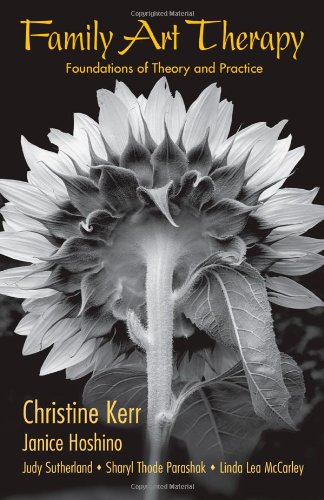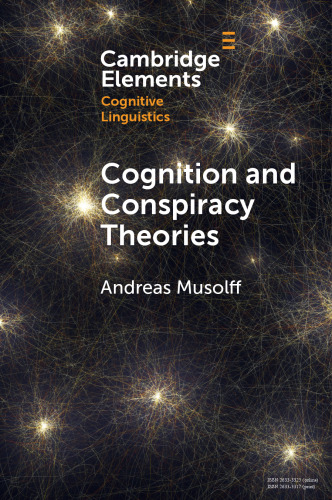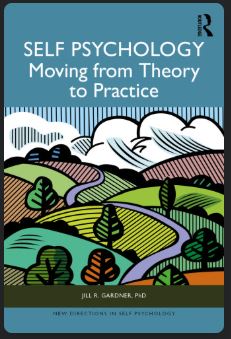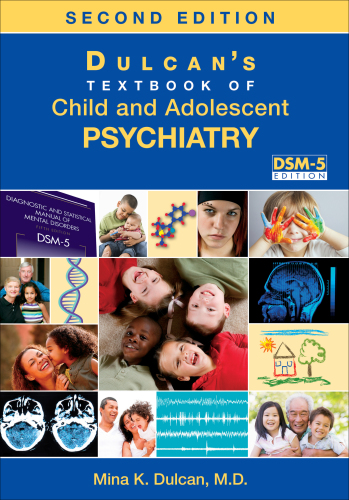It is important to note that many of the theoretical constructs found in art therapy were largely psychoanalytical. However, as systems theory emerged within the larger field of psychology and social work, art therapy educa- xiv inTroduCTion tion likewise included systems theory within its educational curriculum. A paradigmatic shift from traditional art therapy approaches to a systemic, cybernetic approach in education and clinical practice began to surface. Out of this paradigm shift emerged those practitioners trained in art and action- oriented nonverbal processes that began to clinically incorporate the use of art in therapy with couples and families. Consequently, we proposed a family art therapy text that would bring together the classic and postmodern family therapy theories and techniques (Anderson, 1991; Bowen, 1972; Duhl & Duhl, 1981; Framo, 1982, 1992; Haley, 1967; Gergen, 1985; Ginsberg, 1989; McGoldrick & Gerson, 1985; Minuchin, 1974; Satir, 1971, 1983; Whitaker, 1976) with practical clinical approaches from the field of art therapy. Unlike other introductory texts in family art therapy, this edition hopes to not only summarize where and how this field has developed over the past 25 years (Kwiatkowska, 1978), but also to present where the field of family art therapy is going. As the field broadens and is more inclusive of disparate theoretical points of view, so should the family art therapist be able to develop a breadth of knowledge that incorpo- rates classic family therapy theory with postmodern approaches. Why Incorporate art Into FamIly therapy treatment? What are the potential benefits of family art therapy? The art process offers a variety of meaningful experiences for families in treatment. It has been stated many times by those in the field of art therapy, that art interventions can reduce defensiveness and may unlock deeper levels of experiential understanding for both individuals and families in treatment (Landgarten, 1987; Linesch, 1993; Riley, 1993; Rubin, 1984; Wadeson, 1980). Family problems are often tena- cious and resistive to change because they are embedded in powerful but unseen structures. The art process can often bypass well-entrenched defenses that manifest themselves as obstacles to the family members’ interpersonal understanding of each other. Additionally, the art process may allow the pos- sibility for family members to articulate emotions and thoughts through a visual means, which unlike verbal dialogue allows individual self-expression to be made permanent through the art product. Second, when the art-making process is combined therapeutically with verbal treatment, the art directive may allow the family therapist an oppor- tunity to analyze communication patterns by providing a visual record of the family’s structure, subsystems, and boundaries. The efficacy of this evaluative phenomenon is found in the abundance of clinical data that economically can be transferred from the visual art product into clinical assessment and treatment (Burns & Kaufman, 1970; Kwiatkowska, 1978; Landgarten, 1987; Linesch, 1993; Malchiodi, 1998; Oster & Gould, 1987; Riley, 1993; Rubin, 1984; Wadeson, 1980). inTroduCTion xv A third benefit of art making in family treatment is the potential of the art-making process to facilitate needed energy for families that appear deadlocked in anger and hopelessness. Families seeking treatment are often entrenched in failure and impotence (Linesch, 1993). Noting that the pro- cess of making art is by definition a creative and potentially an energizing endeavor, art making promotes not only needed energy for the family but may allow the family to experience a sense of accomplishment as they engage in art making. For this reason, the process of creative art making can be liberating and highly proscriptive. A final benefit of the art process in family treatment involves an increase “in relationship building for family members” (Linesch, 1993, p. 6). In family therapy, attempts at genuine dialogue between: (a) husbands and wives; (b) mothers, daughters, and sons; (c) fathers, daughters, and sons; (d) brothers and sisters; and (e) extended family members are often plagued by rigid con- figurations of both behavior and ritual. However, the nonverbal nature of the art process can offer a means for liberating bound and redundant interper- sonal styles that often make relationships stale, rigid, and dysfunctional. the chapters The chapters in this text provide the student, educator, and clinician with a timeline that is formulated to sequentially delineate the historical context of traditional family therapy theory along with innovative art tasks that comple- ment each theory. Chapter 1, “Family Art Images in Historical and Social Perspectives,” the- matically explores the rich archival database of historical family art images, found across numerous artistic genres and in past and present societies in Western culture. From the perspective of art history scholarship, these works of art offer enormous validity and interpretative value for the use of family art images as a therapeutic tool in family treatment. This chapter will support this assumption and offer the reader an overview of the evolving Western family over time. In Chapter 2, “The Development of Family Therapy and Family Art Therapy,” the reader is introduced to basic cybernetic and systems theories. Key family therapists are highlighted, as well as the underpinnings of fam- ily therapy language and theory. This includes (a) the family as a system, (b) characteristics of functional and dysfunctional family interaction, and (c) the family developmental life cycle. Within these foundational constructs of classic family therapy theory, family art therapy is introduced to the reader. Included within this introduction is an historical overview of family art ther- apy and key interviews with notable family art therapy clinicians and authors. Additionally, the rationale for using art-based evaluations and assessments in addressing family dysfunction is also presented. xvi inTroduCTion Chapter 3, “Object Relations and Attachment Theory: Creativity of Mother and Child in the Single Parent Family,” is based on early mother and child intervention. This chapter gives a brief overview of object relation’s theory/attachment theory and its application to the art therapy process. Addi- tionally, this chapter formally introduces an exciting freestanding teen pro- gram that is based on pre-art, art, drama, and play therapy. This program addresses the mother/infant relationship within an object relation’s theoreti- cal construct. Chapter 4, “Bowenian Family Therapy and Family Art Therapy,” presents the core concepts and theoretical constructs of Murray Bowen (1972). Murray Bowen was the first family therapist to develop a complete theory concerning the therapeutic relevance of the intergenerational projective process. This concept describes the transmission of the family’s emotional process through multiple generations. According to Bowen (1978), in every generation the child most involved in the family’s emotional life moves towards a lower level of differ- entiation of self, while the least involved child moves towards a higher level. This led Bowen (1972) to develop a systematic approach to family therapy that emphasized family of origin work, which includes not only the nuclear family but also the family intergenerationally. Art therapy case vignettes highlight this technique as a vital and innovative tool in tapping into this key construct. Additionally, personal self-work for the art therapy trainee are presented in this chapter. The chapter highlights the importance of a family training model that integrates the technical components of the visual arts with family of ori- gin exploration. In Chapter 5, “Structural Family Art Therapy,” the core concepts of Salva- dor Minuchin (1974) are presented. Minuchin’s theory and contribution to the field of family therapy is notable. Minuchin’s (1974) structural view focuses on how families are organized and what rules govern their transactions. His core concepts and therapeutic guidelines for diagnosis and treatment have often been regarded as one of the most influential and most widely practiced family systems in the history of family therapy. Art therapy interventions and case vignettes elucidate and complement Minuchin’s (1974) core theory and techniques. Chapter 6, “Experiential Family Therapy and Art Therapy,” focuses on the work of Fred and Bunny Duhl (1981); Virginia Satir (1983); Satir and Baldwin (1983), and Carl Whitaker (1976). Experiential family therapy is influenced by existential, humanistic, and phenomenological theories. The central premise in this family therapy orientation is a commitment to: (a) self-actualization of the individual and family, (b) personal self-expression, and (c) congruency between feelings and behaviors. Emanating from this tradition is the inclusion of a host of innovative techniques and structured exercises to help the family expand their repertoire of emotional experiences. Within this tradition, fam- ily art therapy was born with the work of Hanna Kwiatkowska (1978) at the Institute for Mental Health in Washington, DC. inTroduCTion xvii Chapter 7, “Adlerian Family Art Therapy,” is based on the theory found in individual psychology as conceptualized by Alfred Adler and Rudolf Dreikurs (Dreikurs, 1986). Individual psychology is a theory that evolves to meet the challenge of understanding human behavior in the social field. Chapter 8, “Filial Art Therapy: A Rogerian Approach,” supports the work of humanistic traditions found in the work of Carl Rogers and rela- tionship enhancement therapy (Ginsberg, 1989). Core concepts of both of these approaches are addressed. Additionally, filial therapy is presented as an innovative child-centered family therapy approach. Within a filial art therapy approach, the family is engaged in a psychoeducational process that focuses on learning principles and skills needed to provide child-centered, home- based art therapy sessions. This approach originated in the early 1960s to engage the parents as the primary agents of change. Second, this approach has benefited from historical effectiveness for dysfunctional families with young children (Ginsberg, 1989; Guerney & Guerney, 1985).
چکیده فارسی
توجه به این نکته مهم است که بسیاری از ساختارهای نظری موجود در هنر درمانی عمدتاً روانکاوانه بودند. با این حال، با ظهور نظریه سیستم ها در زمینه بزرگتر روانشناسی و کار اجتماعی، آموزش هنردرمانی مقدمه نیز نظریه سیستم ها را در برنامه آموزشی خود گنجانده است. یک تغییر پارادایمیک از رویکردهای هنر درمانی سنتی به یک رویکرد سیستمی و سایبرنتیک در آموزش و عملکرد بالینی شروع به ظهور کرد. از این تغییر پارادایم، آن دسته از پزشکان آموزش دیده در هنر و فرآیندهای غیرکلامی کنش گرا پدید آمدند که شروع به ترکیب بالینی استفاده از هنر در درمان با زوج ها و خانواده ها کردند. در نتیجه، ما یک متن هنردرمانی خانوادگی را پیشنهاد کردیم که نظریهها و تکنیکهای کلاسیک و پست مدرن خانوادهدرمانی را گرد هم میآورد (اندرسون، 1991؛ بوون، 1972؛ دول و دول، 1981؛ فرامو، 1982، 1992؛ هیلی، 1967؛ گرگن، 198. ؛ گینزبرگ، 1989؛ مک گلدریک و گرسون، 1985؛ مینوچین، 1974؛ ساتر، 1971، 1983؛ ویتاکر، 1976) با رویکردهای بالینی عملی از حوزه هنر درمانی. برخلاف سایر متون مقدماتی در هنر درمانی خانواده، این نسخه امیدوار است نه تنها خلاصه کند که این رشته در 25 سال گذشته کجا و چگونه توسعه یافته است (Kwiatkowska، 1978)، بلکه همچنین نشان دهد که رشته هنر درمانی خانواده به کجا می رود. همانطور که این حوزه گسترش مییابد و دیدگاههای نظری متفاوت را در بر میگیرد، هنردرمانگر خانواده نیز باید بتواند گسترهای از دانش را توسعه دهد که نظریه خانوادهدرمانی کلاسیک را با رویکردهای پست مدرن ترکیب کند. چرا هنر را در درمان خانواده درمانی بگنجانیم؟ مزایای بالقوه هنر درمانی خانواده چیست؟ فرآیند هنر انواع تجربیات معنادار را برای خانواده ها در درمان ارائه می دهد. بارها توسط کسانی که در زمینه هنردرمانی فعالیت میکنند بیان شده است که مداخلات هنری میتواند حالت تدافعی را کاهش دهد و ممکن است سطوح عمیقتری از درک تجربی را برای افراد و خانوادههای تحت درمان باز کند (لندگارتن، 1987؛ لینش، 1993؛ رایلی، 1993؛ روبین. ، 1984؛ وادسون، 1980). مشکلات خانوادگی اغلب سرسخت و مقاوم در برابر تغییر هستند، زیرا در ساختارهای قدرتمند اما دیده نشده قرار دارند. فرآیند هنری اغلب میتواند از دفاعهای ریشهدار دور بزند که خود را بهعنوان موانعی برای درک بینفردی اعضای خانواده از یکدیگر نشان میدهند. علاوه بر این، فرآیند هنری ممکن است این امکان را برای اعضای خانواده فراهم کند تا احساسات و افکار را از طریق ابزاری بصری بیان کنند، که بر خلاف گفتگوی کلامی اجازه می دهد تا بیان فردی از طریق محصول هنری دائمی شود. دوم، زمانی که فرآیند هنرسازی به صورت درمانی با درمان شفاهی ترکیب میشود، دستورالعمل هنری ممکن است به درمانگر خانواده این فرصت را بدهد تا با ارائه یک رکورد بصری از ساختار، زیرسیستمها و مرزهای خانواده، الگوهای ارتباطی را تجزیه و تحلیل کند. اثربخشی این پدیده ارزیابی در فراوانی دادههای بالینی یافت میشود که از نظر اقتصادی میتوانند از محصول هنرهای تجسمی به ارزیابی و درمان بالینی منتقل شوند (Burns & Kaufman, 1970؛ Kwiatkowska, 1978؛ Landgarten, 1987؛ Linesch, 1993؛ Malchiodi, 1998؛ اوستر و گولد، 1987؛ رایلی، 1993؛ روبین، 1984؛ وادسون، 1980). مقدمه xv سومین مزیت هنرسازی در خانواده درمانی، پتانسیل فرآیند هنرسازی برای تسهیل انرژی مورد نیاز برای خانواده هایی است که در خشم و ناامیدی به بن بست به نظر می رسند. خانواده هایی که به دنبال درمان هستند، اغلب در شکست و ناتوانی قرار دارند (لینش، 1993). با توجه به اینکه فرآیند ساختن هنر بنا به تعریف یک تلاش خلاقانه و بالقوه انرژیبخش است، هنرسازی نه تنها انرژی مورد نیاز خانواده را ارتقا میدهد، بلکه ممکن است به خانواده اجازه دهد تا زمانی که درگیر هنرسازی میشوند، احساس موفقیت را تجربه کنند. به همین دلیل، روند ساخت هنر خلاق می تواند آزادکننده و بسیار پیشگیرانه باشد. مزیت نهایی فرآیند هنر در درمان خانواده شامل افزایش "در ایجاد رابطه برای اعضای خانواده" است (لینش، 1993، ص 6). در خانواده درمانی، تلاش برای گفتگوی واقعی بین: (الف) زن و شوهر. ب) مادران، دختران و پسران؛ ج) پدران، دختران و پسران؛ د) برادران و خواهران؛ و (ه) اعضای خانواده گسترده اغلب با پیکربندی های سفت و سخت رفتار و مناسک گرفتار می شوند. با این حال، ماهیت غیرکلامی فرآیند هنر میتواند وسیلهای برای رهایی از سبکهای بین فردی محدود و زائد باشد که اغلب روابط را کهنه، سفت و سخت و ناکارآمد میسازد. فصلها فصلهای این متن جدول زمانی را در اختیار دانشآموز، مربی و پزشک قرار میدهد که بهمنظور تشریح متوالی زمینه تاریخی نظریه خانوادهدرمانی سنتی همراه با وظایف هنری نوآورانهای که هر نظریه را تکمیل میکند، فرموله شده است. فصل 1، «تصاویر هنری خانوادگی در دیدگاههای تاریخی و اجتماعی»، به طور موضوعی پایگاه آرشیوی غنی تصاویر هنری خانوادگی تاریخی را که در ژانرهای هنری متعدد و در جوامع گذشته و حال در فرهنگ غربی یافت میشود، بررسی میکند. از دیدگاه دانش پژوهی تاریخ هنر، این آثار هنری اعتبار و ارزش تفسیری عظیمی را برای استفاده از تصاویر هنری خانوادگی به عنوان یک ابزار درمانی در درمان خانواده ارائه می دهند. این فصل از این فرض حمایت میکند و مروری کلی از خانواده غربی در حال تکامل در طول زمان به خواننده ارائه میدهد. در فصل 2، "توسعه خانواده درمانی و هنر درمانی خانواده"، خواننده با نظریه های سایبرنتیک و سیستم های اساسی آشنا می شود. خانواده درمانگران کلیدی و همچنین زیربنای زبان و نظریه خانواده درمانی برجسته می شوند. این شامل (الف) خانواده به عنوان یک سیستم، (ب) ویژگی های تعامل عملکردی و ناکارآمد خانواده، و (ج) چرخه زندگی رشد خانواده است. در این ساختارهای بنیادی نظریه خانواده درمانی کلاسیک، هنر درمانی خانواده به خواننده معرفی می شود. در این مقدمه مروری تاریخی بر هنر درمانی خانواده و مصاحبههای کلیدی با پزشکان و نویسندگان برجسته هنردرمانی خانواده وجود دارد. علاوه بر این، منطق استفاده از ارزیابیها و ارزیابیهای مبتنی بر هنر در رسیدگی به اختلال عملکرد خانواده نیز ارائه شده است. xvi مقدمه فصل 3، "روابط شیء و نظریه دلبستگی: خلاقیت مادر و کودک در خانواده تک والد" بر اساس مداخله اولیه مادر و کودک است. این فصل مروری کوتاه بر نظریه رابطه شیء/نظریه دلبستگی و کاربرد آن در فرآیند هنر درمانی میدهد. علاوه بر این، این فصل به طور رسمی یک برنامه هیجان انگیز مستقل برای نوجوانان را معرفی می کند که مبتنی بر پیش هنر، هنر، نمایش و بازی درمانی است. این برنامه به رابطه مادر / نوزاد در ساختار نظری یک رابطه شی می پردازد. فصل 4، "خانواده درمانی بوونین و هنر درمانی خانواده"، مفاهیم اصلی و ساختارهای نظری موری بوون (1972) را ارائه می دهد. موری بوون اولین خانواده درمانگر بود که نظریه کاملی را در مورد ارتباط درمانی فرآیند فرافکنی بین نسلی ایجاد کرد. این مفهوم انتقال فرآیند عاطفی خانواده را از طریق چندین نسل توصیف می کند. به گفته بوون (1978)، در هر نسلی، کودکی که بیشترین نقش را در زندگی عاطفی خانواده دارد، به سمت سطح پایینتری از تمایز خود حرکت میکند، در حالی که کودکی که کمترین درگیر بودن را دارد به سمت سطح بالاتری حرکت میکند. این امر باعث شد که بوون (1972) رویکردی سیستماتیک برای خانواده درمانی ایجاد کند که بر کار خانواده مبدأ تأکید داشت، که نه تنها خانواده هسته ای بلکه خانواده را به صورت بین نسلی نیز شامل می شود. نقاشیهای موردی هنردرمانی این تکنیک را بهعنوان ابزاری حیاتی و نوآورانه در استفاده از این ساختار کلیدی برجسته میکنند. علاوه بر این، خود کار شخصی برای کارآموز هنردرمانی در این فصل ارائه شده است. این فصل اهمیت یک مدل آموزشی خانواده را برجسته می کند که اجزای فنی هنرهای تجسمی را با خانواده مبدأ اکتشاف ادغام می کند. در فصل 5، "هنر درمانی ساختاری خانواده"، مفاهیم اصلی سالوادور مینوچین (1974) ارائه شده است. نظریه و سهم مینوچین در زمینه خانواده درمانی قابل توجه است. دیدگاه ساختاری مینوچین (1974) بر چگونگی سازماندهی خانواده ها و قوانین حاکم بر معاملات آنها متمرکز است. مفاهیم اصلی و دستورالعملهای درمانی او برای تشخیص و درمان اغلب بهعنوان یکی از تأثیرگذارترین و پرکاربردترین سیستمهای خانوادگی در تاریخ خانواده درمانی در نظر گرفته میشوند. مداخلات هنردرمانی و نگاره های موردی نظریه و تکنیک های اصلی مینوچین (1974) را روشن و تکمیل می کند. فصل 6، "خانواده درمانی تجربی و هنر درمانی"، بر کار فرد و بانی دول (1981) تمرکز دارد. ویرجینیا ساتیر (1983); ساتر و بالدوین (1983) و کارل ویتاکر (1976). خانواده درمانی تجربی تحت تأثیر نظریه های وجودی، انسان گرایانه و پدیدارشناسی است. فرض اصلی در این جهت گیری خانواده درمانی، تعهد به موارد زیر است: (الف) خودشکوفایی فرد و خانواده، (ب) ابراز وجود شخصی، و (ج) همخوانی بین احساسات و رفتارها. برخاسته از این سنت، گنجاندن انبوهی از تکنیکهای نوآورانه و تمرینهای ساختاری است که به خانواده کمک میکند تا مجموعه تجربیات عاطفی خود را گسترش دهد. در چارچوب این سنت، هنر درمانی خانوادگی با کار هانا کویتکووسکا (1978) در موسسه بهداشت روان در واشنگتن دی سی متولد شد. مقدمه Xvii فصل 7، "هنر درمانی خانواده آدلری"، بر اساس نظریه ای است که در روانشناسی فردی وجود دارد که توسط آلفرد آدلر و رودولف دریکورز (Dreikurs, 1986) مفهوم سازی شده است. روانشناسی فردی نظریه ای است که برای مقابله با چالش درک رفتار انسان در حوزه اجتماعی تکامل می یابد. فصل 8، «هنر درمانی فرزندی: رویکردی راجریان»، از کار سنتهای انسانگرایانه موجود در آثار کارل راجرز و درمان بهبود روابط حمایت میکند (گینزبرگ، 1989). مفاهیم اصلی هر دوی این رویکردها پرداخته شده است. علاوه بر این، فرزند درمانی به عنوان یک رویکرد نوآورانه خانواده درمانی کودک محور ارائه می شود. در یک رویکرد هنردرمانی فرزندی، خانواده درگیر یک فرآیند روانی آموزشی است که بر یادگیری اصول و مهارتهای مورد نیاز برای ارائه جلسات هنردرمانی مبتنی بر کودک متمرکز است. این رویکرد در اوایل دهه 1960 آغاز شد تا والدین را به عنوان عوامل اصلی تغییر درگیر کند. دوم، این رویکرد از اثربخشی تاریخی برای خانوادههای ناکارآمد با فرزندان خردسال سود برده است (گینزبرگ، 1989؛ گورنی و گورنی، 1985).
ادامه ...
بستن ...










